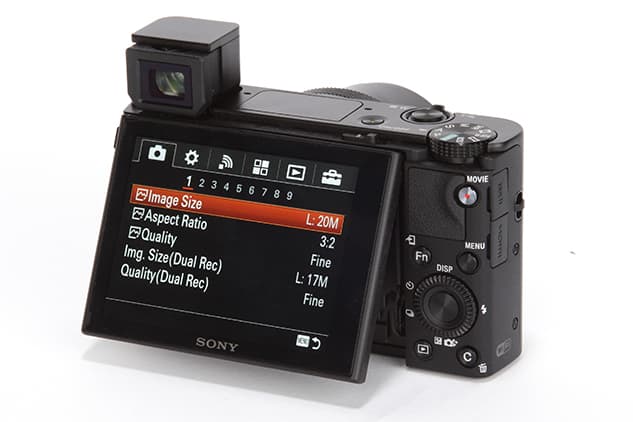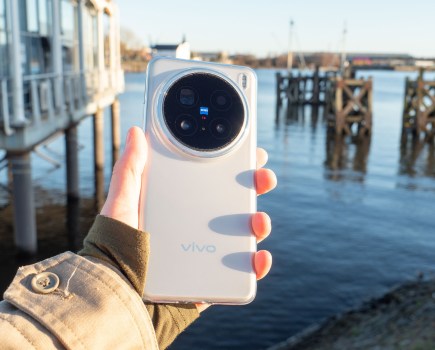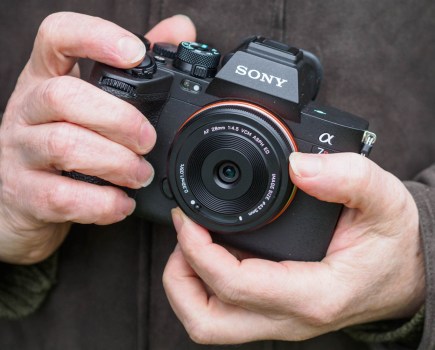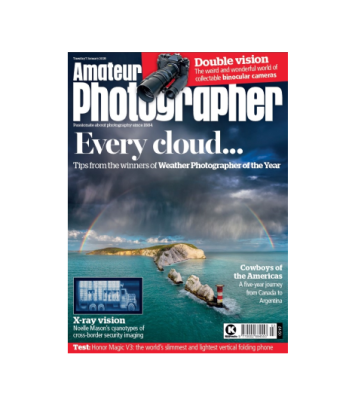Sony Cyber-shot DSC-RX100 IV Review – Performance
The RX100 IV’s focusing performance is comparable to the RX100 III and the contrast detection system is hasty by compact camera standards. The claimed 0.09sec acquisition speed is only 0.03secs slower than Sony’s A6000 that uses a more sophisticated hybrid AF system. There’s focus tracking and face detection, but without a touchscreen you’re reliant on tapping, or holding the directional buttons to reposition the AF-point around the frame. As we said before when we reviewed the RX100 III, adding a touchscreen would make for more intuitive autofocus operation, but this would have undoubtedly made RX100 IV even more expensive than it already is.

The tilting display is excellent for high and low angled shots, but regretfully it’s not the touchscreen type
Loaded with a Lexar Professional 2000x SDXC UHS-II 64GB memory card and set to speed priority continuous, the RX100 IV rattled out 44 extra fine JPEGs at 16fps – an extremely impressive figure made possible by fitting it out with the new Exmor RS sensor. Switching the file format to Raw lowers the frame rate to 9fps and 29 images were recorded at this speed before the buffer kicked in and prevented any more being taken. As for the speed of the zoom, it can be set to two settings – normal or fast. Set to normal, it takes 1.8secs to get from one end of the zoom range to the other, which compares to 1.2secs when it’s set to fast.
I tested the new high frame rate (HFR) feature and it’s both a fascinating and fun experience creating slow motion footage at 1000fps. To give you an idea of just how slow it is, 1 second of real time footage is slowed down to about 40 seconds, but there’s also the option to select a slower frame rate if you’d prefer. The RX100 IV offers 960/1000fps, 480/500fps, or 240/250fps (NTSC/PAL), depending on which is most suitable for the speed of a moving subject. Image quality is almost Full HD at 240/250fps, and HD at 480/500fps in Quality Priority mode.
After taking some time to get your head around how it works, it’s easy to get carried away and become quite obsessed by it. The full suite of manual exposure settings (PASM) is available to set exposure as normal and in order to capture such slow footage the shutter speed has to be set at 1/500sec or faster. To resolve the best quality footage without pushing the ISO too high the best slow motion results are created in bright lighting conditions.
https://link.brightcove.com/services/player/?bctid=4397425984001
Before capturing slow motion footage the camera must be focused and the exposure set. With this done you can then put the RX100 IV into its standby mode, which means that it is ready to begin recording with a press of the record start/stop button. You’re given two ways to capture footage, and these are selected in the main menu. Start Trigger begins recording the second that you press the start button and it will record a few seconds of footage before stopping.
However, the onscreen display shows the slowed down footage, rather than what is happening live, so it’s difficult to know exactly what is going on. The better option in most situations is to use the End Trigger setting, which begins capturing footage continuously as soon as the camera is in the HFR standby mode. When you press the button the camera actually stops recording, and shows you the last few seconds of slowed down footage on the rear screen. After a few attempts, the end trigger method becomes very straightforward and easy to use.
There’s the choice of three metering modes – multi, center and spot. For most images the evaluative metering mode was relied upon and it delivered excellent exposures that were neither underexposed nor overexposed. Exposure compensation can be easily adjusted from the quick menu, or if you’d prefer it can be assigned to the control ring around the lens in aperture priority and shutter priority modes.








